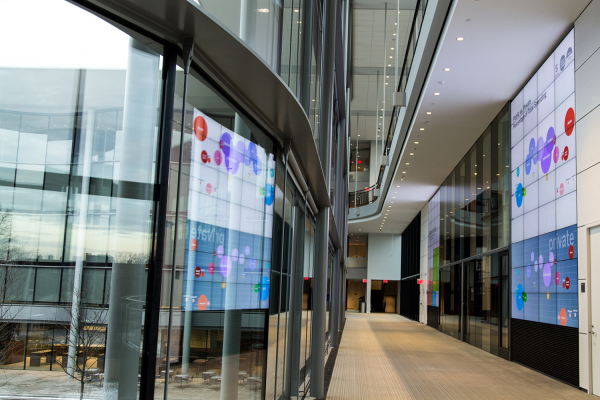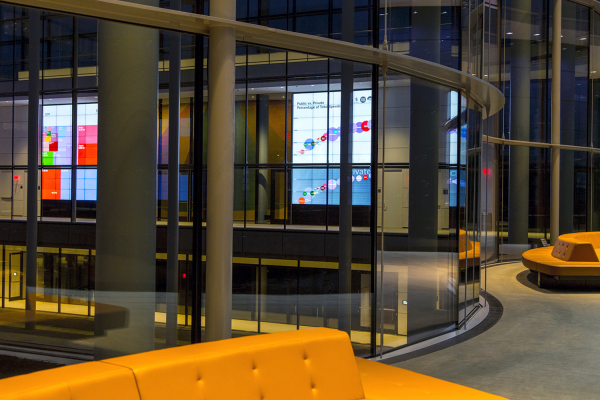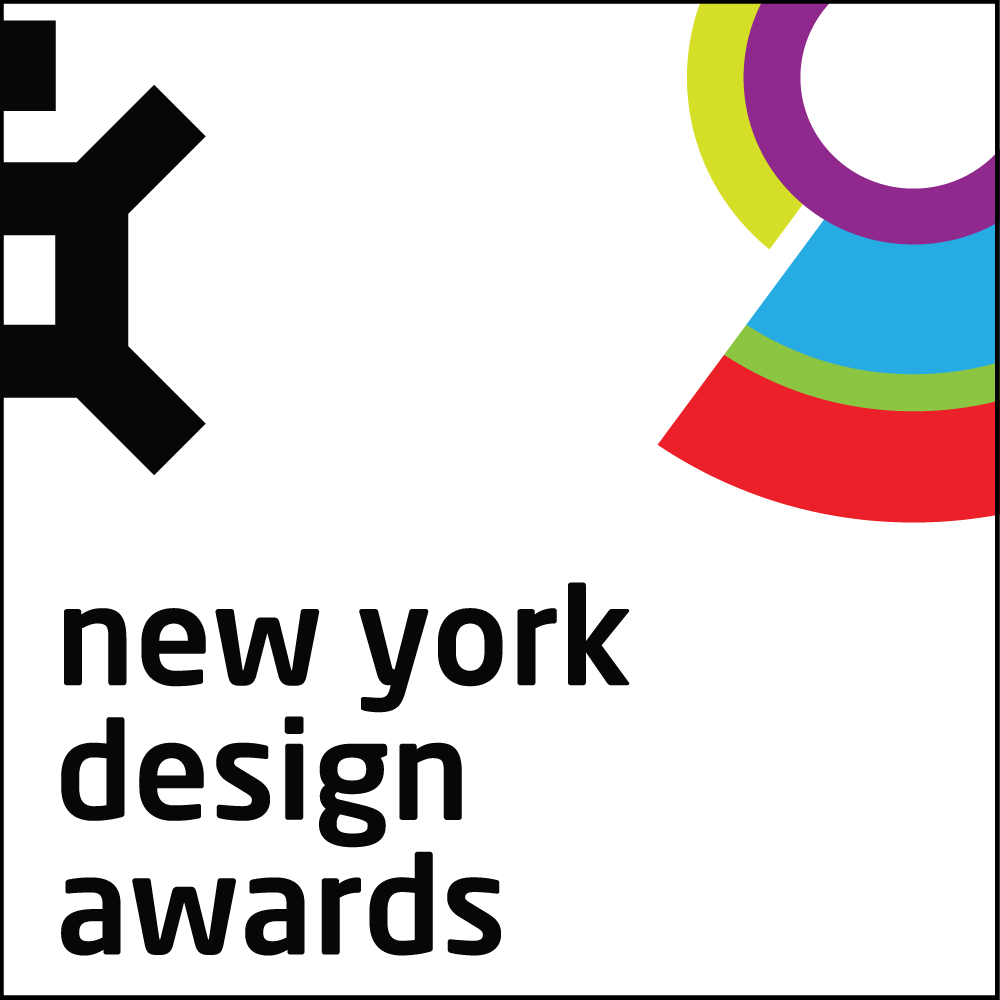










Project Overview
The Yale School of Management (SoM), a new 242,000 square foot building was designed and built by Norman Foster + Partners. To create a lasting impression of the school’s presence and brand, and to easily communicate timely information, Unified Field created three floors of interactive media and digital signage for the students, faculty and visitors at Yale. This narrow cast network displays real time information such as school-wide agendas, class and conference schedules, special announcements, insightful information and photography from students, staff and guest speakers as well as customized presentations, data visualizations and broadcast media. The data visualization on the three-level floor to ceiling media installation currently addresses topics related to the theme of business, society and leadership in an increasingly complex world. Topics include global comparisons of Internet and social media usage, type and availability of medical care as a percentage of population, life expectancy, comparisons of market values of publicly traded stock, cost of capital and gross national product.
Project Commissioner
Project Creator
Team
Marla Supnick: Project Lead
Jeff Miller: Director of Technology
Tonian Irving: Sr. Producer
Maureen Lin: Art Director / Designer
John Singer: Tech Lead / Programmer
BobbiJo McCauley: Graphic Designer
Project Brief
The data that is visualized over three stories is visible in all areas of the school and out onto the street. The media was designed to communicate the reach and connection of the Yale School of Management to global issues around the world. The media displays dynamic graphic visualizations of social and economic data and offers shifting perspectives on global trends on a wide variety of comparative scales. By examining and communicating major trends transforming markets, organizations and societies around the world, we communicate the essence of the schools brand in a visceral way, without being promotional or general. The dynamic content is fresh, relevant and intuitive, inspiring lively conversation and provocative thought around the school at any time of day or night.
Project Innovation/Need
The innovative success of this project was pushing a digital signage system into a narrow cast network. The media moves the communication way beyond mere reporting of information to interpretation of the schools essential connection to global and business issues. Dynamic messaging conveys the brand identity by creating a dynamic and live communication channel.
Design Challenge
The media walls are three-stories high and can be seen from all over the school and out onto the street, thus the display must respond to a wide variety of physical, graphical and content constraints. The media had to be visible from many different views, perspectives, distances and timing. It had to be legible and clear during both day time and evening hours. Additionally, it had to be compelling to audience members who were visiting just once and others who passed by often, some quickly and some with time to linger.
Effectiveness
The project was only recently completed so we do not yet have official metrics of its effectiveness. The digital signage system and the media walls have been very well received by the schools administration, students and visitors. It has also received high praise from Norman Foster + Partners, the architect that designed the media walls as part of the physical structure of the building, and who stated that it captured their vision for a branded communication system for the Yale School of Management. While the project was originally designed as a temporary installation it was so well received that it has become permanent and will continue to scale, bringing new sources of content and data to the viewing public.
Graphic Design - Environmental
This award celebrates creativity and innovation in the intersection of communication design and the built environment, and is concerned with the visual aspects of wayfinding, communication identity and brands, information design and shaping the idea of place. Consideration given to clarity of communication and the matching of information style to audience.
More Details

